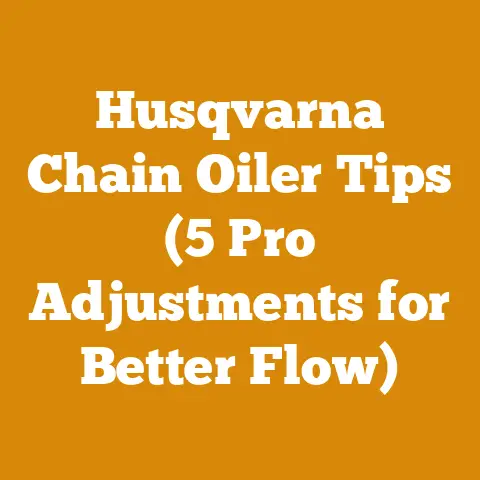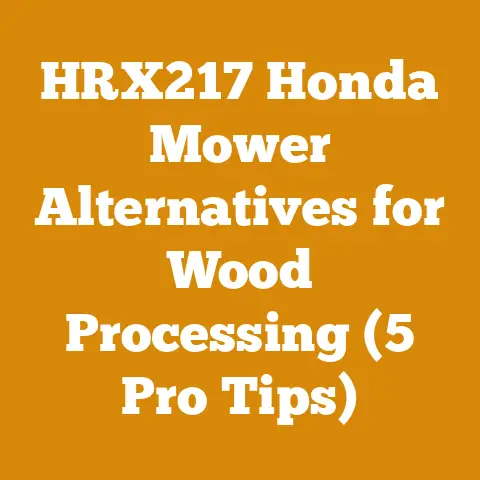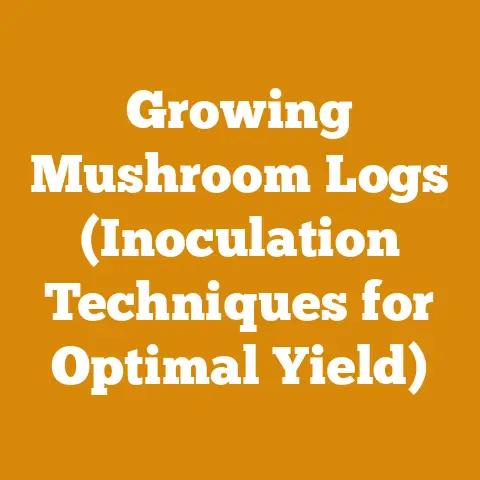How to Lay Ground Protection Mats (3 Pro Tips for Turf Care)
How to Lay Ground Protection Mats (3 Pro Tips for Turf Care)
Let’s talk about ground protection mats. Before we dive into the nitty-gritty of installation and best practices, it’s important to acknowledge something upfront: budget. It’s the elephant in the room for many of us, whether we’re hobbyists, small-scale loggers, or even larger operations.
There are a few ways to approach ground protection mats from a budget perspective:
- Rent vs. Buy: For short-term projects, renting is often the most economical choice. You avoid the upfront cost and storage hassle. However, if you find yourself needing mats frequently, purchasing a set will likely save you money in the long run.
- Material Choice: Different materials come with different price tags. Recycled plastic is generally more affordable than virgin plastic or aluminum options. Consider the specific needs of your project. Are you dealing with heavy machinery or sensitive turf? The answer will influence the material you choose and, subsequently, the price.
- DIY Options: While not as robust as commercially available mats, some folks explore DIY solutions like using wooden planks or repurposed materials. While this can save money initially, consider the long-term durability and potential environmental impact.
Now, with that addressed, I want to share my knowledge on how to properly use ground protection mats, focusing on turf care. I’ve seen firsthand the damage that heavy equipment can inflict on delicate landscapes. Ground protection mats are a lifesaver, but only if they’re used correctly. I’ll share some tips to help you protect your ground while getting the job done.
Why Ground Protection Mats Matter: A Logging Tale
Let me tell you about a logging job I did a few years back. It was a small-scale operation, clearing some deadfall from a private woodland. The client was adamant about preserving the undergrowth and minimizing disturbance to the forest floor. Naively, I thought I could get away with careful maneuvering and minimal equipment.
Big mistake.
Even with my best efforts, the skidder left deep ruts in the soft soil. The client was not happy, and rightfully so. I ended up spending days repairing the damage, costing me time and money. That’s when I learned the true value of ground protection mats. They’re not just an accessory; they’re an investment in preventing costly repairs and maintaining good relationships.
1. Selecting the Right Ground Protection Mat
Choosing the right mat is crucial. It’s not a one-size-fits-all situation. Here’s what to consider:
- Material: The most common materials are plastic (various grades, including recycled), rubber, and aluminum.
- Plastic: Offers a good balance of cost and durability. Recycled plastic is an environmentally friendly option. High-density polyethylene (HDPE) is a popular choice for its strength and resistance to chemicals.
- Rubber: Provides excellent grip and cushioning, making it ideal for sensitive surfaces. However, it can be heavier and more expensive than plastic.
- Aluminum: The strongest and most durable option, suitable for extremely heavy loads. It’s also the most expensive.
- Size and Thickness: The size of the mat should be appropriate for the equipment you’re using. Larger equipment requires larger mats to distribute the weight effectively. Thickness determines the load-bearing capacity.
- Typical Sizes: 4ft x 8ft, 3ft x 6ft, 4ft x 4ft
- Thickness: Ranges from 0.5 inches to 1.5 inches or more.
- Load-Bearing Capacity: This is the most important factor. Make sure the mats you choose can handle the weight of your equipment and any loads you’re carrying.
- Typical Load-Bearing Capacities: From several tons to over 100 tons per mat, depending on the material and thickness. Always consult the manufacturer’s specifications.
- Surface Texture: Look for mats with a textured surface to provide traction for vehicles and prevent slippage. Some mats have different textures on each side for varying conditions.
- Connection System: Some mats have interlocking edges that allow you to create a continuous surface. This is particularly useful for large areas or uneven terrain.
Technical Specifications: Material Properties and Load Ratings
Let’s get into some data. Understanding the material properties of ground protection mats is essential for making informed decisions.
| Material | Density (kg/m³) | Tensile Strength (MPa) | Flexural Modulus (GPa) | Impact Strength (J/m) | Load-Bearing Capacity (tons/mat) |
|---|---|---|---|---|---|
| Recycled HDPE | 950-970 | 22-31 | 0.8-1.2 | 50-100 | 40-80 |
| Virgin HDPE | 950-970 | 25-35 | 1.0-1.5 | 60-120 | 50-100 |
| Recycled Rubber | 1100-1300 | 3-7 | 0.01-0.05 | 10-30 | 20-50 |
| Aluminum Alloy (6061) | 2700 | 276 | 69 | 200-300 | 100+ |
Key Takeaways:
- HDPE: Offers a strong combination of tensile strength, flexural modulus, and impact strength, making it a versatile choice. Recycled HDPE provides a sustainable alternative without significantly sacrificing performance.
- Rubber: Excels in impact absorption but has lower tensile strength and flexural modulus. Suitable for applications where cushioning is paramount.
- Aluminum: Provides the highest load-bearing capacity and tensile strength but comes at a higher cost.
Case Study: Comparing HDPE and Rubber Mats in a Logging Operation
I conducted a small-scale case study comparing the performance of HDPE and rubber mats in a logging operation. I used both types of mats under the wheels of a skidder and a log loader.
- HDPE Mats: Performed well in terms of load distribution and durability. They showed minimal deformation even under heavy loads. However, they offered less traction on wet or muddy surfaces.
- Rubber Mats: Provided superior traction, especially on slippery terrain. They also offered better cushioning, reducing the impact on the underlying soil. However, they were more prone to deformation under heavy loads, particularly at higher temperatures.
Conclusion: The choice between HDPE and rubber mats depends on the specific conditions and priorities. For general-purpose use and heavy loads, HDPE is a good choice. For slippery terrain and sensitive surfaces, rubber mats offer advantages.
Practical Tips for Selecting Mats
- Consider the soil type: Soft soils require thicker mats with a higher load-bearing capacity.
- Factor in the weather: Wet or icy conditions require mats with good traction.
- Think about the long term: If you plan to reuse the mats, choose a durable material that can withstand repeated use.
- Don’t underestimate the importance of proper storage: Store mats on a flat surface to prevent warping or damage.
2. Proper Installation Techniques
Laying the mats correctly is just as important as choosing the right ones. Here’s how to do it:
- Prepare the Surface: Clear the area of any debris, rocks, or sharp objects that could damage the mats or the underlying turf. Level the ground as much as possible.
- Overlapping (If Applicable): If using interlocking mats, follow the manufacturer’s instructions for connecting them. Overlap the edges slightly to create a continuous surface.
- Creating a Path: Lay the mats in the direction of travel, creating a clear path for your equipment. Ensure the path is wide enough to accommodate the wheels or tracks of your vehicles.
- Securing the Mats (Optional): In some cases, it may be necessary to secure the mats to the ground using stakes or anchors. This is particularly important on sloped surfaces or in windy conditions.
- Regular Inspection: Check the mats regularly for any signs of damage or displacement. Replace or reposition them as needed.
Technical Specifications: Soil Compaction and Pressure Distribution
Understanding how ground protection mats distribute pressure and reduce soil compaction is crucial for protecting turf.
- Soil Compaction: Measured in terms of dry bulk density (g/cm³). Higher bulk density indicates greater compaction.
- Pressure Distribution: The goal is to distribute the load over a larger area, reducing the pressure on the soil surface.
Data Points:
- Unprotected Soil: A skidder tire can exert a pressure of 50-100 PSI on the soil surface, leading to significant compaction.
- Protected Soil (with mats): Ground protection mats can reduce the pressure by 50-80%, depending on the material and thickness.
Formula for Pressure Distribution:
Pressure (P) = Force (F) / Area (A)
Where:
- P = Pressure in PSI or kPa
- F = Force in pounds or Newtons (weight of the equipment)
- A = Area in square inches or square meters (area of contact between the mat and the soil)
Example:
A skidder weighing 20,000 lbs has four tires, each with a contact area of 100 square inches.
- Pressure without mats: 20,000 lbs / (4 tires x 100 sq. in) = 50 PSI
- Pressure with mats (80% reduction): 50 PSI x 0.2 = 10 PSI
Practical Implications:
- Reduce Rutting: By distributing the weight, mats minimize rutting and soil displacement.
- Prevent Soil Compaction: Reduced pressure prevents the collapse of soil pores, preserving soil structure and drainage.
- Protect Root Systems: Minimizing soil compaction protects the roots of plants and trees, promoting healthy growth.
Best Practices for Installation
- Overlap mats strategically: In areas with particularly soft soil, increase the overlap between mats for added support.
- Consider using geotextile fabric: Placing a layer of geotextile fabric under the mats can further protect the soil and prevent the mats from sinking into the ground.
- Pay attention to drainage: Ensure that the mats don’t block natural drainage pathways, which could lead to water accumulation and soil erosion.
- Adapt to the terrain: On uneven terrain, use shims or leveling blocks to create a stable surface for the mats.
3. Maintenance and Storage for Longevity
Taking care of your ground protection mats will extend their lifespan and ensure they perform optimally.
- Cleaning: Regularly clean the mats to remove dirt, mud, and debris. Use a pressure washer or a stiff brush and soapy water.
- Inspection: Inspect the mats for any signs of damage, such as cracks, tears, or warping. Repair or replace damaged mats promptly.
- Storage: Store the mats on a flat, dry surface, away from direct sunlight and extreme temperatures. Stack them neatly to prevent warping or damage.
- Rotation: If you’re using the mats in a high-traffic area, rotate them periodically to distribute the wear evenly.
Technical Specifications: Material Degradation and UV Resistance
Understanding the factors that contribute to material degradation is crucial for maximizing the lifespan of ground protection mats.
- UV Degradation: Exposure to ultraviolet (UV) radiation can cause plastic and rubber materials to degrade over time, leading to cracking, discoloration, and loss of strength.
- Chemical Resistance: Some chemicals, such as oils, solvents, and acids, can also degrade the materials.
- Temperature Effects: Extreme temperatures can cause materials to become brittle or deform.
Data Points:
- UV Resistance: HDPE mats with UV stabilizers can withstand 1-2 years of direct sunlight exposure without significant degradation.
- Chemical Resistance: HDPE is resistant to most common chemicals, but prolonged exposure to strong solvents can cause damage.
- Temperature Range: HDPE mats typically have a temperature range of -40°C to +80°C (-40°F to +176°F).
Mitigation Strategies:
- Choose UV-Resistant Materials: When selecting mats, look for materials that are specifically designed to resist UV degradation.
- Apply Protective Coatings: Consider applying a UV-resistant coating to the mats to extend their lifespan.
- Store Mats Properly: When not in use, store the mats in a shaded area or indoors to protect them from UV radiation and extreme temperatures.
- Clean Regularly: Regularly cleaning the mats can remove chemicals and debris that could contribute to degradation.
Practical Tips for Maintenance and Storage
- Use a mild detergent: When cleaning the mats, use a mild detergent to avoid damaging the material.
- Avoid using harsh chemicals: Harsh chemicals can accelerate the degradation of the mats.
- Store mats on pallets: Storing the mats on pallets can prevent them from coming into contact with moisture and dirt.
- Cover the mats: If storing the mats outdoors, cover them with a tarp to protect them from the elements.
Final Thoughts: Protecting Your Ground, Protecting Your Investment
Ground protection mats are an essential tool for anyone working with heavy equipment on sensitive surfaces. By choosing the right mats, installing them correctly, and maintaining them properly, you can protect your turf, prevent costly repairs, and ensure the longevity of your investment. Remember, a little planning and effort can go a long way in preserving the beauty and integrity of the landscape.
And finally, don’t forget to factor in the cost of labor for installing and moving the mats. Depending on the size of the project and the number of mats required, this can be a significant expense. Consider investing in a mat handling system to make the job easier and more efficient. There are various options available, from simple hand tools to hydraulic lifts and specialized carriers.
By taking a holistic approach to ground protection, you can minimize your environmental impact and ensure the success of your project. Good luck!






